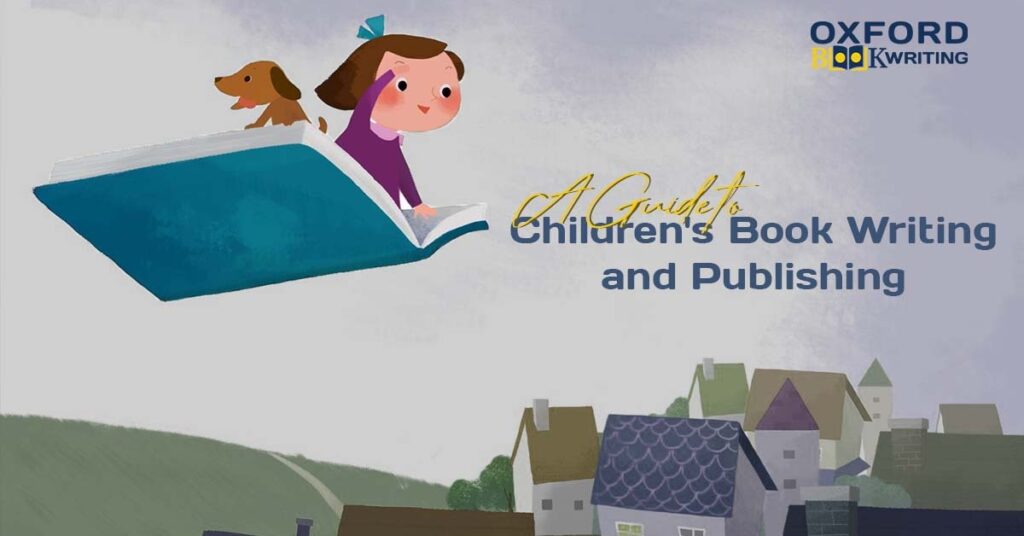As an adult, writing for adults is an easy task. You can relate to them and can understand their perception level. However, children are different than adults. They have different literary needs and interests. At the same time, their scope of understanding and worldview is different than most adults. A writer must consider these differences while writing a children’s book to remain in the good books of its readers.
Additionally, the author must also cater to the demands of the parents of these children if he wants to remain in business for long. After all, parents will be the ones making the buying decisions, won’t they be?
So, how can you write a children’s book that captures the interest of young children and the trust of their parents? Here are a few tips:
Spend Time with Children
The first step of writing a children’s book is not developing a story idea. It’s spending time with children and understanding them. Better yet, spend time with them as a caregiver where they rely on you and you must understand their needs and respond to them. Does it feel too stretched out? Even if does, it’s the only way to understand children of most ages.
You may think you will pull it off because you are a former child. Well no, it doesn’t work that way. While no one can deny that you have had your fair share of childhood, you have outgrown that phase and through the lens of your adult experiences, you may never look back and enjoy the moments you had in the past.
So, instead of trying to relive your childhood, you must live the childhood of children around you even if it’s for a few weeks or months. Learn to entertain them and shed the sophisticated adult life and language we acquire with time.
Ideate the Story
Now that you know the readers and their developmental needs, you are in a good position to conceptualize the storyline. Keep it simple. If you want a complicated novel with lots of characters and events, you will want to divide the story into parts.
Think about the genre. You can pick from adventure, mystery, fantasy, comedy, fiction, or non-fiction. More complex genres can include horror and historical fantasy. You can test your idea by telling some parts of the story to children in your care.
Outline
If your story gains approval from the children near you, you can assume its success. Start working on the project proactively. Start with an outline. A strong outline builds on a strong plot with distinct starting and ending points. Also, you want to think about the world in which this story is set. Detail the characters, their physical attributes, and their behavioral tendencies before embarking on the book writing phase.
You will also want to be clear about the structure of this story. Do you want to write it in perfectly chronological order? Or will you give the backstory of some characters at some point in the story? Once you have thought the structure of your story through, write it down as an outline.
Write
The next step is obvious. Once your book outline is established, you need to sit down to write the story. You can also choose to hire a children’s book writing service to see your dream getting accomplished. If you do so, make sure that you vet the ghostwriter thoroughly before committing. Also, share the complete outline and remain available for communication.
You will want to schedule updates and communication to review the work promptly and keep it aligned with your desires.
If you proceed with the writing phase yourself, be mindful of the language you use. You will want to stick to concrete concepts or only those abstract nouns that are widely used in your culture or the culture of target readers. Simple phrases and easy-to-understand sentences are a must-have for children’s books. At the same time, you will want to make the scenes dramatic to induce engagement and attraction.
Edit
The writing phase will be followed up by the editing phase. If you have hired a ghostwriter for your book, you can ask them for references to quality book editing service providers. If your ghostwriter is part of a book publishing agency, you can get the editing service included in the whole book creation package.
If you have written the book yourself, you should start the editing process with self-editing. Hire a professional editor to ensure no mistakes can seep into the final book. Follow it up with an intensive proofreading session.
Illustrate
Depending on the age of your readers, you might want to illustrate different events of the story. You can hire professional illustrators for this service. While illustrations don’t have to be too flashy, they can greatly impact how your book is received by young readers. To maintain the quality of your book, go for professional illustrations.
Format and Design
These are the last parts of the book creation process. Most authors think of these parts even before penning down their story. You must have thought about the font and size of the typography. OR maybe you only have imagined the front cover and size of your book. How should it appear to the target readers? Think about it and communicate it to your designer.
Publish
Once the book is complete and you are satisfied with its appearance, you will want to run a final test on it before publishing. Present it to a few children and see if they like it or not. Are they willing to buy in exchange for their toys or pocket money? Once you are satisfied with the outcome, pick the right publishing platform for your book and launch it.
If you are new to the book publishing game, you will have little idea of the platforms and their features. You can get a better idea by employing experienced book publishing services.
Market
Don’t delay this step until your book is ready and launched. You will need to start marketing your book as soon as you have developed its concept and storyline. Market your book by sharing glimpses into it via social media channels targeted to parents and children. You can use book launch events, giveaways, and book fair events to broaden your book’s exposure.
Wrap Up
Writing a children’s book isn’t a difficult task, but it requires a special kind of understanding of children and their psychology. Use this blog post to know the best process to know these readers and to write for them.



